Institute of Environmentology, Research and Education for Sustainability or Sustainable Development, Kazutoshi Fujihira
Inagi Ecohouse
Institute of Environmentology >> Inagi Ecohouseh
Based on the “Sustainable Housing Research,” we have actually designed a detached house. This home has been built in Inagi City, Tokyo and is nicknamed "Inagi Ecohouse."
The Inagi Ecohouse has been assessed and ranked in the highest "S" or "![]() " by the "CASBEE (Comprehensive Assessment System for Built Environmental Efficiency) for Home." It has also been classified into the best "
" by the "CASBEE (Comprehensive Assessment System for Built Environmental Efficiency) for Home." It has also been classified into the best "![]() " of the "LCCM (Life Cycle Carbon Minus) House Certification." In addition, it has been certified as a "long-life quality house." Furthermore, thorough energy conservation and utilization of solar energy have enabled the house to achieve an amazing 500% of energy self-sufficiency.
" of the "LCCM (Life Cycle Carbon Minus) House Certification." In addition, it has been certified as a "long-life quality house." Furthermore, thorough energy conservation and utilization of solar energy have enabled the house to achieve an amazing 500% of energy self-sufficiency.
In the 6th Sustainable Housing Awards, “Inagi Ecohouse” has received the Japan Wooden Houses & Industry Association President Award.
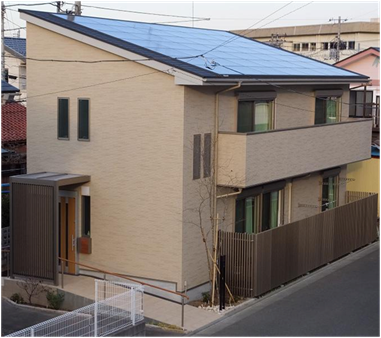
Outline
The Inagi Ecohouse is a two-story wooden house with a total floor area of about 123m2. The solar power generation system with a total capacity of 11.4kW, which is placed on the single-pitch roof facing south, utilizes natural energy to the maximum. We have designed to place the solar panels not on roof materials but on sheathing roof boards, aiming at the integration and weight reduction of the roof. The exterior is highly fire-resistant ceramic siding; the window material is a combination of aluminum and resin which has both superior durability and thermal insulation performance.
The balcony and the roof with pendent eaves can block strong sunlight of the summer from shining into the windows on the south. The deciduous tree planted as the symbol tree, Fraxinus lanuginosa f. serrata, similarly prevents summer intense sunlight from coming into the windows of the staircase.
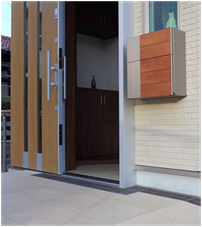
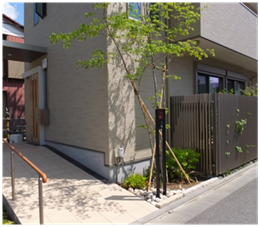
We have also taken the maximum consideration to barrier-free design. The approach, which connects the frontal road and the entrance porch, is a slope. The entrance doorway has no difference in level and the door is a sliding type. All of internal doorways have likewise no differences in level and sliding doors are used. All of resident rooms are bright and pleasant space since they have large windows on the south side. The materials which surround the internal space, including thermal insulation and windows, excel in thermal insulation performance and air-tightness properties; therefore, the indoor temperature of the house is stable. The house is equipped with air conditioners, which are, however, used a little only in the period of winter and the height of summer.
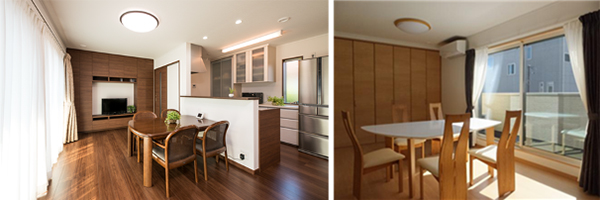
Meanwhile, all of apparatus and appliances used in this home are energy-efficient manufacturers. The hot-water supply equipment is electric heat-pump water heater; all of the lighting fixtures use LED lights. Likewise, the air-conditioners, refrigerator, television, etc. are top-level energy-saving electrical products.
Other considerations for sustainability meet our eyes everywhere. The fence is useful for privacy, security and ventilation, as well as screening the outdoor unit of the air conditioner from view. The rainwater accumulated in the 200-liter tank can almost meet the demand for watering plants. Furthermore, the fallen rain on the roof is led to the underground through seepage pits, except being stored in the rainwater tank.
The framework satisfies the requirements of the Seismic Resistance Grade 3 of the Japan Housing Performance Indication Standards. This means that the building can withstand 1.5 times the strength of an earthquake stipulated in the Building Standards Act of Japan. In addition, more than half of the wood used in this house is domestically produced timber whose legality and sustainability is authorized.
Energy Self-sufficiency of 500%
The Inagi Ecohouse, whose roof facing south is almost entirely covered with solar panels, utilizes natural energy to the maximum. Moreover, thorough energy saving has enabled the house to reduce its energy usage only 30% of average detached houses in which the same members live. As a result, the energy produced by sunlight amounts to 5 times of the energy that is used in this house; in other words, the energy self-sufficiency is 500%.
CASBEE Assessment and LCCM Certification
In August 2014, we had the Inagi Ecohouse assessed by "CASBEE for Home (Detached House)." CASBEE, which was developed under the initiative of the Ministry of Land, Infrastructure and Transport in 2001, is a system for evaluating and ranking buildings in terms of their environmental performance. "CASBEE for Home" evaluates the comprehensive environmental performance of detached houses based on the following six categories: Comfortable, Healthy and Safe Indoor Environment (Q1), Ensuring a Long Service Life (Q2), Creating a Richer Townscape and Ecosystem (Q3), Conserving Energy and Water (LR1), Using Resources Sparingly and Reducing Waste (LR2), and Consideration of the Global, Local and Surrounding Environment (LR3). The overall assessment is represented by a value of Building Environmental Efficiency (BEE). According to the BEE value, detached houses are graded into five ranks: S (Excellent)![]() , A (Very good)
, A (Very good) ![]() , B+ (Good)
, B+ (Good) ![]() , B- (Fairly poor)
, B- (Fairly poor)![]() , C (Poor)
, C (Poor)![]() .
.
The assessment results of the Inagi Ecohouse are available to the public on a webpage of "General incorporated foundation Institute for Building Environment on Energy Conservation" and that of "General incorporated foundation Center for Better Living."
The essence of assessment is shown in the figure below left; the BEE value is very high, 6.7, which has ranked the house in "S" with ease. All scores of the six categories are high, 4.0 or over: Q1 = 4.4, Q2 = 4.6, Q3 = 4.6, LR1 = 4.7, LR2 = 4.0, LR3 = 4.6. These values prove that the house excels in both Environmental Quality (Q) and Environmental Load Reduction (LR).
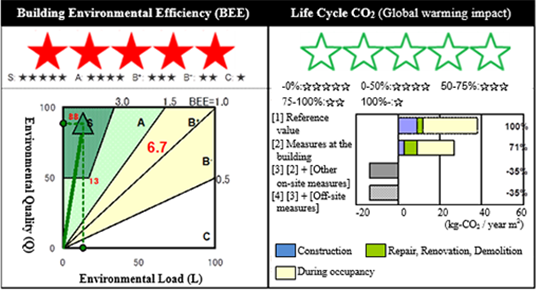
After the CASBEE assessment, we had the home certified as a Life Cycle Carbon Minus (LCCM) house. The LCCM house can be defined as a "house with a negative CO2 emission in its total life cycle, including construction, utilization and demolition. LCCM House Certification requires that the house is ranked in "S" or "A" of CASBEE ranking, as its precondition. The Certification is classified into "![]() " and "
" and "![]() ;" only houses with "
;" only houses with "![]() " meet the above definition.
" meet the above definition.
As shown in the right of the figure above, the Life Cycle CO2 of the Inagi Ecohouse is equivalent to "minus 35%" as compared with 100% of common houses’ Life Cycle CO2, or the reference value. As a result, the LCCM House Certification has also been classified into "![]() " with ease. In addition, as of the end of October 2014, the number of LCCM certified houses with "
" with ease. In addition, as of the end of October 2014, the number of LCCM certified houses with "![]() " is 12 nationwide, including this house. In Tokyo Metropolis, the Inagi Ecohouse is the first one.
" is 12 nationwide, including this house. In Tokyo Metropolis, the Inagi Ecohouse is the first one.
Sustainable Housing Awards
In the 6th Sustainable Housing Awards, “Inagi Ecohouse” has received the Japan Wooden Houses & Industry Association President Award.
The Sustainable Housing Awards is a housing design competition which is held every two years under the auspices of the Institute for Building Environment and Energy Conservation (IBEC). What are publicly commended at the competition are excellent detached houses that combine a comfortable living environment while lowering the burden on the natural environment.
In the selection of the 6th Sustainable Housing Awards, the judging committee, which consisted of eleven experts including seven university professors, examined 46 entries. As a result, the Inagi Ecohouse has won the Japan Wooden Houses & Industry Association President Award.
According to the review, the chief attractive aspects of the house have been its remarkably high energy self-sufficiency and energy saving efficiency. In addition, the house has been highly evaluated because of its very high value of Building Environmental Efficiency (BEE) in the “CASBEE for Home” assessment as well as the certification as a Life Cycle Carbon Minus (LCCM) house with five stars.
Related publications
Sustainable Home Design by Applying Control Science
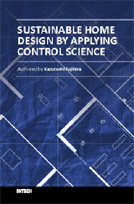
Written by Fujihira, K., InTech, December 2017
Chapter 5
Case Study: Detached House Designed by Following the Control System
Chapter 6
Discussion and Conclusion: Effectiveness, Characteristics and Future Prospects of the Methodology
Complex Systems, Sustainability and Innovation
Edited by Thomas, C., InTech, December 2017
[Research paper included in this book] Written by Fujihira, K.
・System Control for Sustainability: Application to Building Design
